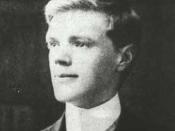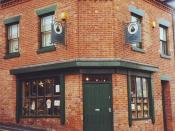David Herbert Lawrence was born on September 11, 1885 at Eastwood in Nottinghamshire, the son of a coalminer and a teacher. Encouraging him academically, his mother actively tried to help him escape the working class that he had been born into. After a period of employment in a surgical goods factory, he won a scholarship to University College, Nottingham where he worked to get a teacherÃÂs certificate. He later married his professorÃÂs wife, Frieda and spent most of his life moving around Europe with her.
Sequel to his earlier book, The Rainbow, Women in Love is widely considered LawrenceÃÂs best novel, although its publication in 1920 was received with widespread criticism and fury. A successful call for censorship accompanied its publication. Critics called for the book to be banned due to its ÃÂstudy of sexual depravity, misleading youth to unspeakable disasterÃÂ. One review, entitled ÃÂA BOOK THE POLICE SHOULD BANÃÂ claims that Women in Love is ÃÂan epic of viceÃÂ , ÃÂugly, repellent, vileÃÂ.
This same critic writes cuttingly in the review that:ÃÂas a study of certain loathsome forms of mental disease it is thorough and painstaking, and I am sure Mr Lawrence does not deserve some form of special recognition from the Royal College of Physicians. Most of his characters are obviously mad. They do and say the sort of things for which living people are shut up in lunatic asylums.ÃÂThis is hardly the sort of response Lawrence desired, but it was the sexual content included; both heterosexual and homosexual as well as the exposure of what Lawrence believed to be a corrupt society that triggered the public outrage against him. - Lawrence actually died in 1930, and didnÃÂt live to see the uncensored edition published ÃÂ I think I read somewhere that it wasnÃÂt until 1982 that a...
![[Portrait of Juan Tizol(?) and Lawrence Brown(?), Aquarium, New York, N.Y., ca. Nov. 1946] (LOC)](https://s.writework.com/uploads/7/77189/portrait-juan-tizol-and-lawrence-brown-aquarium-new-york-n-thumb.jpg)

